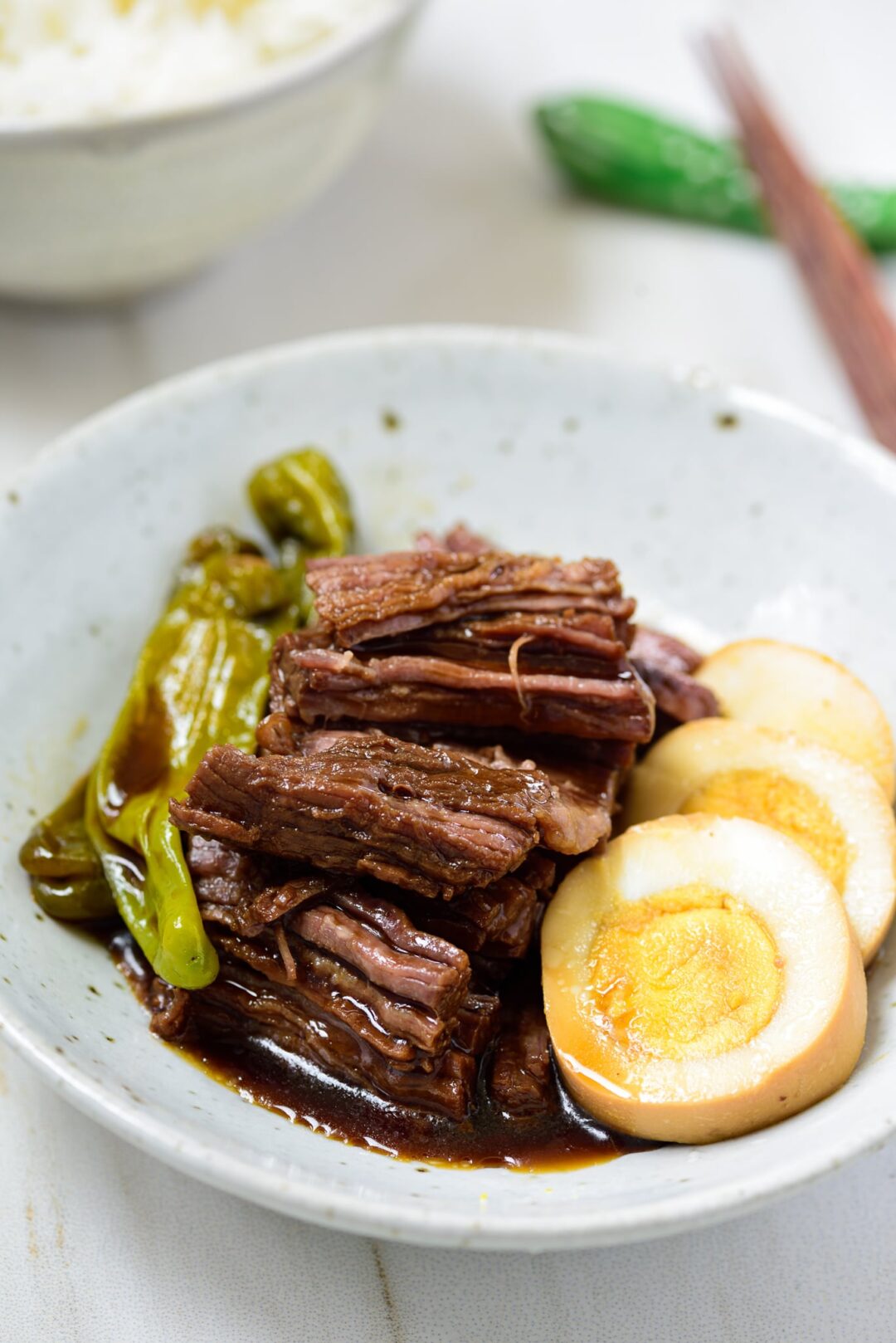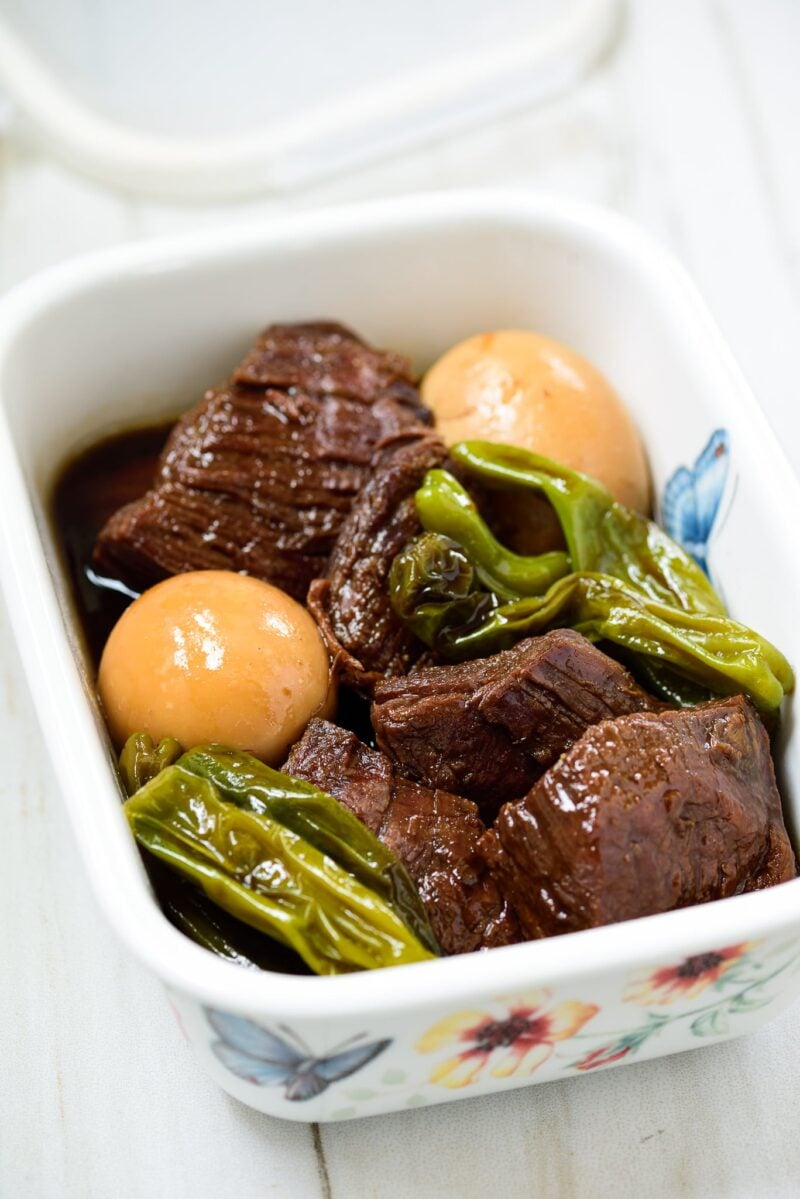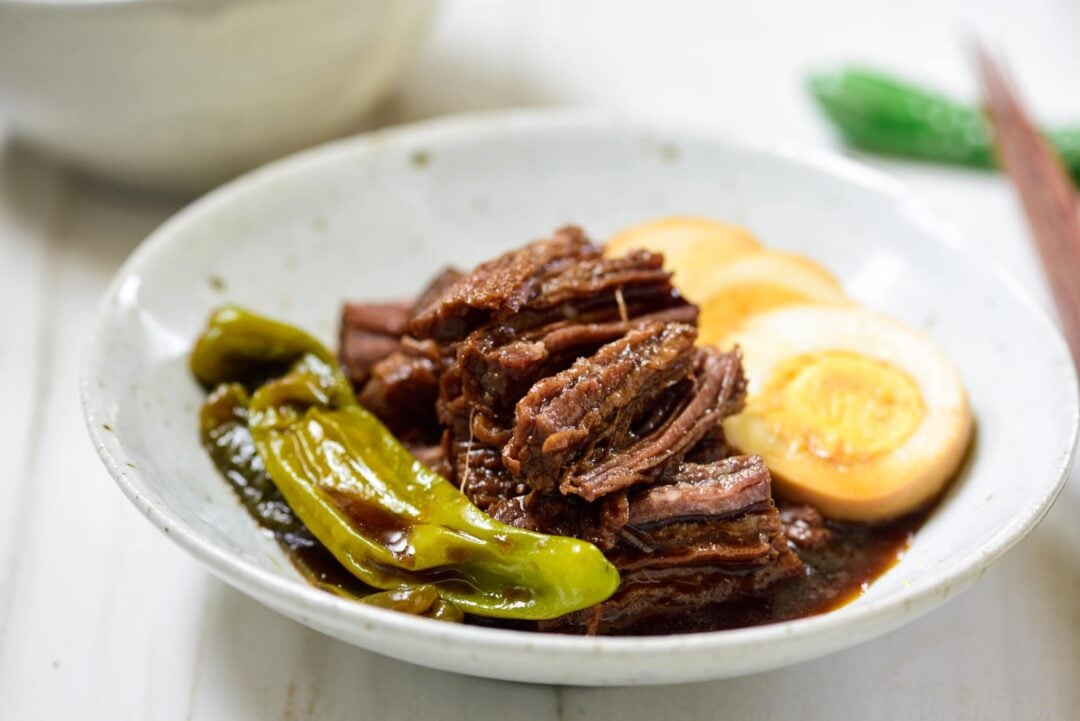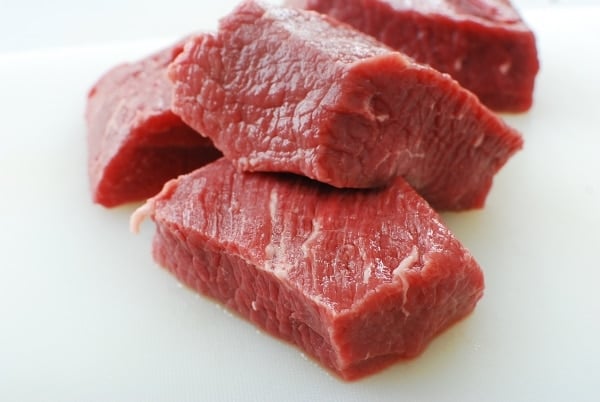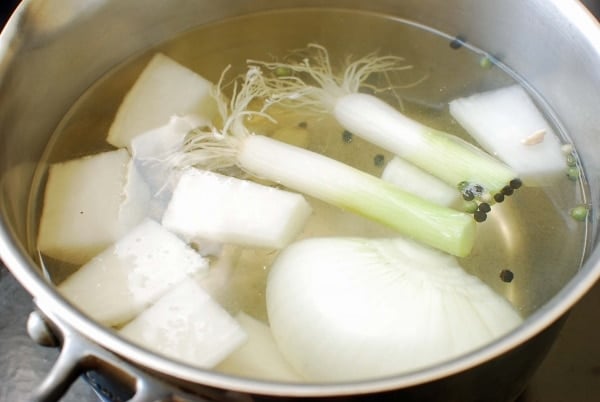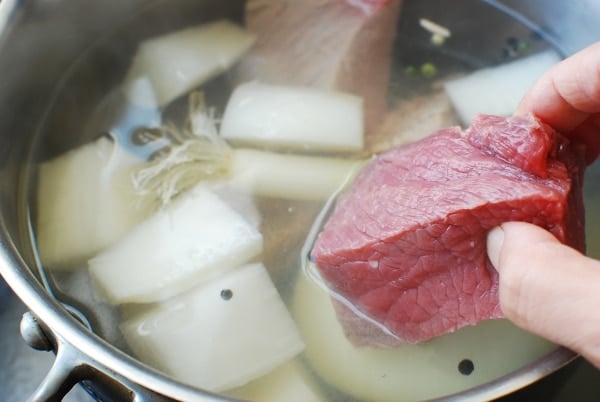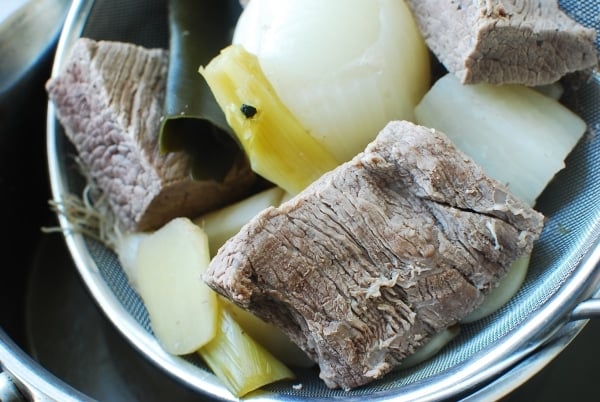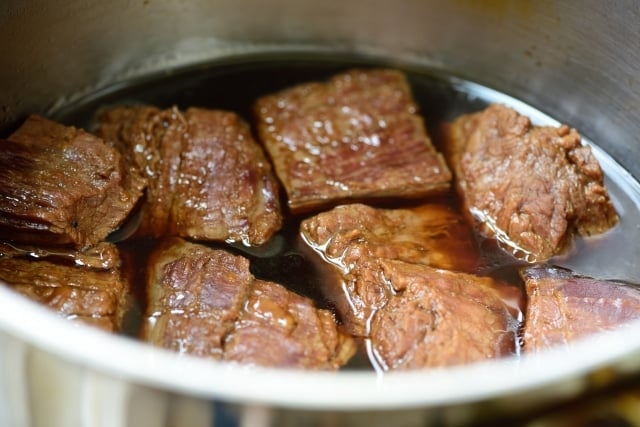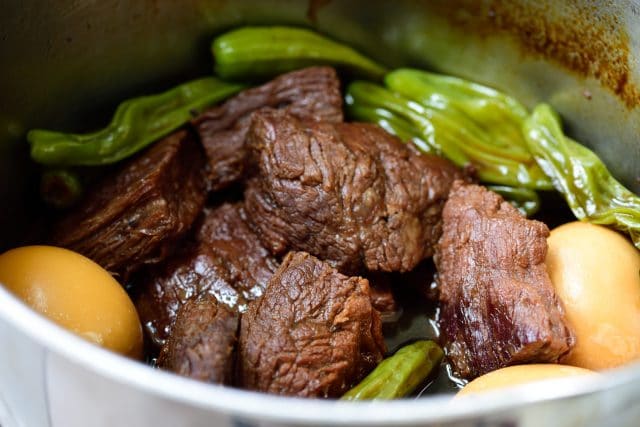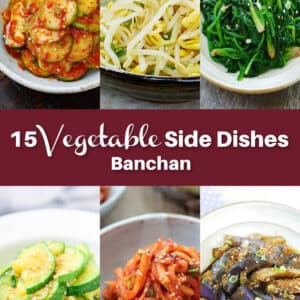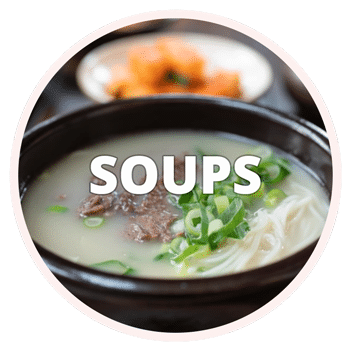Jangjorim is a soy-braised beef dish. It’s a slightly sweet, salty side dish that goes well with any Korean meal!
Jangjorim (장조림) is a soy-braised beef dish. It’s a slightly sweet and salty dish that’s meant to be eaten in small amounts as a basic side dish, mitbanchan (밑반찬). As such, a little bit of meat goes a long way.
Back in the day, when beef was scarce, jangjorim was an economical way to put some beef on the table for the whole family. It’s also a popular side dish for home-packed lunch boxes. Kids love it! Growing up, it was the most exciting thing to see in my lunch box. Thanks mom!
Which cut of meat to use
Beef eye round (called hongdukkaesal, 홍두깨살) is commonly used to make jangjorim. However, I like to use brisket (yangjimeori, 양지머리), flank steak (chimatsal yangji, 치맛살 양지), or shank meat (satae, 사태) because they are more flavorful and yield a better texture. The cooking time may vary depending on which cut of meat you use.
If you like pork jangjorim, use a lean cut such as pork loin or tenderloin.
How to make jangjorim
First, boil some aromatic vegetables for a few minutes to make a flavorful broth. Then, cook small blocks of beef in the broth until the meat is cooked through and fairly tender before adding soy sauce and other seasoning ingredients. The beef will turn tough if you cook in soy sauce from the beginning.
It’s very common to add some fresh chili peppers and/or boiled eggs. Kkwari gochu, 꽈리고추 (aka shishito peppers) is a common choice, but you can use any fresh or dried peppers. Garlic cloves are also delicious braised in the sweet and savory jangjorim sauce.
For more Korean cooking inspirations, follow along on YouTube, Pinterest, Twitter, Facebook, and Instagram.
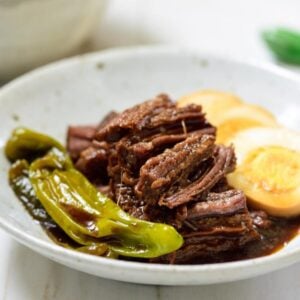
Ingredients
- 1.5 pounds beef brisket, flank steak, or shank meat
- 1/2 medium onion
- 2 scallions white part
- 6 ounces of Korean radish, mu, cut into big chunks
- 7 plump garlic cloves
- 3 thin ginger slices, about 1-inch round
- 1/2 teaspoon whole black peppers (or ground peppers to taste)
Sauce ingredients
- 5 tablespoons soy sauce
- 2 tablespoons soup soy sauce (guk ganjang, 국간장) (or use more regular soy sauce)
- 3 tablespoons sugar
- 3 tablespoons rice wine or mirin
Optional ingredients
- 1 piece 3-inch square dried kelp (or a bay leaf)
- 10 to 12 Shishito peppers (or other fresh green peppers) Use less and cut into halves if using large peppers
- 3 boiled eggs, peeled
Instructions
- Cut the beef into 2 to 3-inch rectangles.
- In a covered medium pot, bring 8 cups of water and the next 6 ingredients to a boil. Continue to boil for 5 minutes over medium high heat.
- Drop the meat into the pot. Bring it to a gentle boil, and remove the scum. Reduce the heat to medium. Boil, covered, for about 30 minutes.
- Remove the meat. Strain the cooking liquid into a large bowl, and then add 2.5 cups of the liquid back to the pot. (You can save the remaining broth to make a soup or stew later.)
- Add the meat and sauce ingredients to the pot. Bring it to a boil over high heat. Reduce the heat to medium, and boil, covered, until the meat is tender and the sauce is reduced to about ⅓, about 20 minutes. You can cook longer if the meat is still not tender enough.
- Add the optional dried kelp, peppers and eggs and continue to boil for about 10 minutes. Discard the kelp, and transfer everything else to an airtight container for storage. Cool before storing in the fridge. Shred the meat and pour some sauce over to serve.


